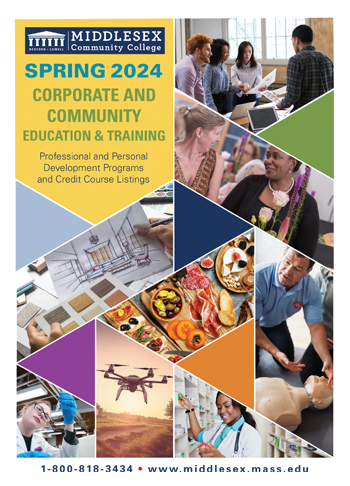Professional Development
at MCC
Research on Learning Communities
Davies, A., Ramsay, J., Lindfield, H., & Couperthwaite, J. (2005). Building Learning Communities: Foundations for Good Practice. British Journal of Educational Technology, 36(4), 615-628. Retrieved from ERIC database.
ABSTRACT The School of Health Sciences at the University of Birmingham provided opportunities for the development of student learning communities and online resources within the neurological module of the BSc Physiotherapy degree programme. These learning communities were designed to facilitate peer and independent learning in core aspects underpinning clinical practice, thus laying the foundation for the development of effective clinical reasoning. This paper examines some of the problems that staff encountered, including the lessons that they learnt through the design, development, and implementation processes of the module, and the subsequent modifications that were made. Student experiences of this course are also included, as they provided staff with further insights into the ways in which these problems impacted upon their preparation for clinical practice and how the module might be improved for future cohorts. From an analysis of the problems that staff encountered and then sought to resolve, and of student experiences of the course, this paper identifies foundations for good practice in the development and delivery of innovative learning and teaching methods.
Dodge, L., & Kendall, M. (2004). Learning Communities. College Teaching, 52(4), 150. Retrieved from ERIC database.
ABSTRACT Although the term "learning communities" may be familiar to some faculty, this article describes several types of learning communities and explains the benefits to both students and faculty. Fostering workforce skills, encouraging problem-solving skills, and increasing retention and success are some of the benefits for students and faculty. In addition, faculty members gain new teaching skills and energize their teaching and learning. Teachers should follow the guidelines provided in this article to implement new learning communities and strengthen existing ones.
Dotolo, Frederick and Theresa Nicolay, Approaching History through Literature: Generating Knowledge through Writing and Inquiry in a Cross Disciplinary First-year Learning Community. The History Teacher 42.1 (2008): 24 pars. 5 Mar. 2010.
ABSTRACT To address the disparity in the skills of entering students and the goals of the first-year learning community (LC) program, the authors created a series of scaffolded, or tiered, writing assignments around the concept of kingship to move students from summary to analysis to synthesis. For each assignment, the authors incorporate informal write-to-learn and inquiry-based learning activities. The informal and formal writing exercises in the learning community help students make informed analyses and develop critical thinking skills. Write-to-learn and inquiry-based learning provide fruitful insights for students and prepare them for the assessment of the learning community, further work in the college core, and the adjustment to forthcoming college work.
Felner, R., Seitsinger, A., Brand, S., Burns, A., & Bolton, N. (2007). Creating Small
Learning Communities: Lessons from the Project on High-Performing Learning Communities
about "What Works" in Creating Productive, Developmentally Enhancing, Learning Contexts.
Educational Psychologist, 42(4), 209-221. Retrieved from ERIC database.
ABSTRACT Personalizing the school environment is a central goal of efforts to transform
America's schools. Three decades of work by the Project on High Performance Learning
Communities are considered that demonstrate the potential impact and importance of
the creation of "small learning environments" on student motivation, adjustment, and
well-being. Findings about how to effectively create such small learning environments
in middle and secondary school are presented. Of particular focus are the ways in
which ecological changes that create smaller schools within large ones, teacher and
student teams, and other personalization strategies may engage diverse, socially,
and economically disadvantaged students, in middle and high schools, to improve academic
performance, reduce dropout rates, enhance developmental outcomes, and close equity
gaps.
Hotchkiss, J., Moore, R., & Pitts, M. (2006). Freshman Learning Communities, College
Performance, and Retention. Education Economics, 14(2), 197-210. Retrieved from ERIC
database.
ABSTRACT Student retention and performance in higher education are important issues
for educators, students, and the nation facing critical professional labor shortages.
Expectancy and goal setting theories were used to predict academic performance and
college student retention. Students' academic expectancy motivation at the start of
the college significantly predicted cumulative GPA at the end of their first year.
Compared to students who did not return, students that returned for their sophomore
year reported greater peer competition with respect to academic goals, perceived good
grades to be more attractive, and reported more effort to get good grades. Students'
SAT scores and high school grade point average were significantly related to both
cumulative GPA and retention after the first year. Study implications are discussed
with an emphasis on the motivational set of college applicants, in conjunction with
more traditional criteria (e.g., high school GPA) that together may increase student
performance and retention.
Stevenson, C., Duran, R., Barrett, K., & Colarulli, G. (2005). Fostering Faculty Collaboration
in Learning Communities: A Developmental Approach. Innovative Higher Education, 30(1),
23-36. Retrieved from ERIC database.
Zhao, C., & Kuh, G. (2004). Adding Value: Learning Communities and Student Engagement.
Research in Higher Education, 45(2), 115-138. Retrieved from ERIC database.
